Industry news
FDOM vs. CDOM: Exploring Complexities of Dissolved Organic Matter
Writer: admin Time:2024-11-04 14:32:56 Browse:1941℃
Dissolved Organic Matter (DOM) is a critical component of aquatic ecosystems, influencing water quality and ecosystem health. Within this broad category, Chromophoric Dissolved Organic Matter (CDOM) and Fluorescent Dissolved Organic Matter (FDOM) are two important subcategories. This article delves into the complexities of DOM, focusing on FDOM and CDOM, their significance, measurement techniques, and implications for water quality.
What is Dissolved Organic Matter?
Dissolved Organic Matter(DOM) refers to the array of organic molecules dissolved in water. DOM is mainly composed of hydrophilic organic acid, proteoid, amino acid, humic acid and carbohydrate.It’s from natural sources such as plant decay and microbial activity, as well as anthropogenic sources like wastewater. Chromophoric Dissolved Organic Matter (CDOM) and Fluorescent Dissolved Organic Matter (FDOM) are important components of DOM. DOM plays a vital role in aquatic ecosystems by influencing nutrient cycles, light penetration, and serving as a food source for microorganisms.

picture from Earth's Critical Zone
What is Chromophoric Dissolved Organic Matter?
Chromophoric Dissolved Organic Matter (CDOM) is the portion of DOM that absorbs light, particularly in the ultraviolet and visible spectrums. There are two main sources of CDOM in water: the degradation of terrestrial vegetation into water through rivers and the formation of phytoplankton by optical degradation. CDOM is responsible for the coloration of natural waters, ranging from pale yellow to dark brown, depending on concentration and composition. It is a key factor in controlling light availability in aquatic environments, affecting photosynthesis and heat absorption.
What is Fluorescent Dissolved Organic Matter?
Fluorescent Dissolved Organic Matter (FDOM) refers to the fraction of DOM that emits fluorescence when exposed to light of specific wavelengths. The fluorescent properties of FDOM allow researchers to identify different organic compounds and their sources, such as terrestrial plant material or algae.
Why Measure CDOM?
Measuring CDOM is vital for several reasons:
Water Quality Assessment: CDOM affects the optical properties of water, influencing how light penetrates and interacts with aquatic environments. By measuring CDOM, scientists can assess the presence of organic pollutants and other substances that may affect water quality.
Ecosystem Health: High concentrations of CDOM can impact aquatic ecosystems by reducing light availability for photosynthesis, which can affect the growth of aquatic plants and the organisms that depend on them. Understanding CDOM levels helps in managing and maintaining healthy aquatic ecosystems.
Nutrient and Carbon Cycling: CDOM plays a role in nutrient cycling and the global carbon cycle. It is involved in chemical reactions that release nutrients and sequester carbon, influencing climate change models and predictions.
Climate Research: CDOM influences the albedo (reflectivity) of water bodies, affecting energy absorption and heat distribution. This has implications for local and global climate studies.
Pollution Monitoring: Measuring CDOM can help identify sources of organic pollution, such as agricultural runoff or wastewater discharge, which can guide remediation efforts and policy-making.
How to Measure CDOM?
Spectral Absorption Coefficient Method:
This method measures the absorption of light at specific wavelengths, typically in the ultraviolet (UV) and visible spectrum. By determining the absorption coefficients at these wavelengths, researchers can quantify the concentration of CDOM in water.
Excitation-Emission Matrix (EEM) Spectroscopy:
EEM spectroscopy is used to analyze the fluorescent properties of CDOM. This technique involves recording the fluorescence intensity of the sample across a range of excitation and emission wavelengths, allowing for the identification and quantification of different types of dissolved organic matter.
Liquid Core Waveguide (LCW) System:
The LCW system is a sensitive method for measuring CDOM absorption spectra. It uses a long pathlength liquid-filled waveguide to enhance the detection of light absorption by CDOM, improving measurement accuracy.
Fluorescence Spectroscopy:
This method measures the fluorescence emitted by CDOM when exposed to light at specific wavelengths. It is a widely used technique due to its sensitivity and ability to differentiate between various types of organic matter based on their fluorescent signatures.
CDOM sensors are available for in-situ measurement of CDOM in aquatic environments. These sensors often adopt UV fluorescence analysis to provide real-time data on CDOM concentrations, making them useful for continuous monitoring.
Conclusion
Understanding the complexities of DOM, particularly FDOM and CDOM, is essential for managing water quality and ecosystem health. By exploring their properties, measurement techniques, and environmental implications, we can better appreciate their role in natural and anthropogenic processes.
FAQs
FDOM vs. CDOM:
While both are subsets of DOM, CDOM is characterized by its light absorption properties, whereas FDOM is identified by its fluorescent characteristics.
Is CDOM the same as DOM Water Quality?
CDOM is a specific component of DOM that affects water quality by altering light penetration and potentially indicating pollution levels.
CATEGORIES
CONTACT US
Yosemitech Technologies Co., Ltd
 +86 19984844080
+86 19984844080
 sales@yosemitech.com
sales@yosemitech.com
 Bldg,25,CECEP Industrial Park, No. 18 Dongchang Rd. Suzhou Industrial Park, Jiangsu Province,China 215126, China
Bldg,25,CECEP Industrial Park, No. 18 Dongchang Rd. Suzhou Industrial Park, Jiangsu Province,China 215126, China







